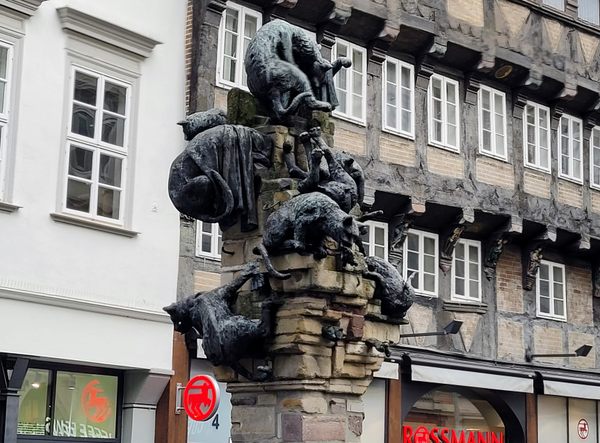Percorso Verde Ex Guidovia (Former Tramway Greenway) in Gaiazza, Italy
In 1490, a farmer told his wife that he’d had a miraculous encounter while grazing his flock: the Madonna appeared to him and instructed him to build a chapel. The simple wooden structure that he constructed evolved over the years into an ornate complex and basilica, now known as the Shrine of Nostra Signora della Guardia. The name, Guardia or “guardian,” references the area’s history: The basilica is built atop an old lookout point that was used to observe ships and armies below. On a clear day, you can see Corsica from the hilltop. Until 1929, the shrine could only be reached by foot from the valley below, a trek taken by a steady flow of pilgrims. Locals had long considered building a train to the basilica, but overcoming the steep climbs and tight bends required a minor miracle of its own. In 1934, though, a tramway successfully opened, featuring an unusual design that included short cars that could navigate the curves and take pilgrims from the nearby town of Ceranesi up to the Basilica. Used by thousands of pilgrims each year, the tramway became uneconomical once a road allowed cars to make the drive up, and was closed in the 1960s. It has since been converted into a popular pedestrian and cycle route, much of which still features the original tracks. The trail passes through tunnels and cuttings, offers panoramic views, and ends at the Basilica, which is well worth the long walk.


In 1490, a farmer told his wife that he’d had a miraculous encounter while grazing his flock: the Madonna appeared to him and instructed him to build a chapel. The simple wooden structure that he constructed evolved over the years into an ornate complex and basilica, now known as the Shrine of Nostra Signora della Guardia. The name, Guardia or “guardian,” references the area’s history: The basilica is built atop an old lookout point that was used to observe ships and armies below. On a clear day, you can see Corsica from the hilltop.
Until 1929, the shrine could only be reached by foot from the valley below, a trek taken by a steady flow of pilgrims. Locals had long considered building a train to the basilica, but overcoming the steep climbs and tight bends required a minor miracle of its own. In 1934, though, a tramway successfully opened, featuring an unusual design that included short cars that could navigate the curves and take pilgrims from the nearby town of Ceranesi up to the Basilica.
Used by thousands of pilgrims each year, the tramway became uneconomical once a road allowed cars to make the drive up, and was closed in the 1960s. It has since been converted into a popular pedestrian and cycle route, much of which still features the original tracks. The trail passes through tunnels and cuttings, offers panoramic views, and ends at the Basilica, which is well worth the long walk.
What's Your Reaction?




























:quality(85):upscale()/2024/01/25/878/n/1922153/f94f61ec65b2bf18018990.47538761_.jpg)

:quality(85):upscale()/2024/01/26/759/n/29590734/b7f6660b65b3e8460d7196.77057039_.jpg)
:quality(85):upscale()/2024/01/27/741/n/1922153/8d43a26665b533b214de01.38307153_.jpg)











